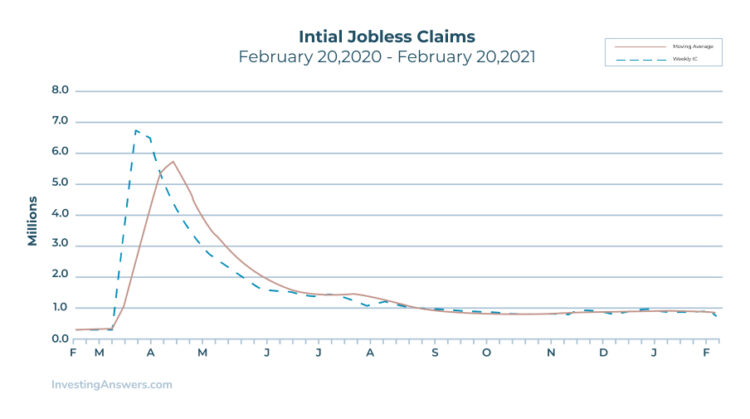What Does Jobless Claims Mean?
Jobless claims is a measure of the number of individuals who filed for state unemployment benefits. It is an important indicator of how many people are unemployed at a point in time. The meaning of jobless claims can vary as it refers to two separate statistics: initial jobless claims and continuing jobless claims.
Initial Jobless Claims
Initial jobless claims refer to people filing for unemployment benefits for the first time.
Continuing Jobless Claims
Continuing jobless claims refers to people who are filing for unemployment benefits after already filing for two or more consecutive weeks.
How Are Jobless Claims Calculated?
The Department of Labor keeps track of the number of people filing for unemployment benefits in each state. The total number of jobless claims are added up and compared against numbers from the previous week.
Who Reports Jobless Claims?
Jobless claims are reported by the US Department of Labor on a weekly basis. The reports include data for the previous week (ending on the prior Saturday) and are released every Thursday at 8:30am ET.
Where to Find Jobless Claims Reports
The jobless claims reports can be found on the Department of Labor website. The following chart highlights initial jobless claims from February 2020 to February 2021.

How Jobless Claims Affect The Economy
Jobless claims are used to gauge the overall state of the labor market and are an important macroeconomic indicator. If fewer people are working, there is less disposable income and reduced consumption (which could lead to a lower GDP). Additionally, the government must spend more money to fund unemployment benefits, contributing to a higher budget deficit.
From week-to-week, analysts and policymakers review the volume of jobless claims – as well as the ratio of initial claims to continuing claims – to gauge the direction of the unemployment rate and the overall health of the economy. Generally speaking, initial jobless claims tend to rise prior to a recession and typically decline as the economy begins to recover.
Why Investors Should Care About Jobless Claims
Beyond the macroeconomic implications, jobless claims can affect both institutional and retail investors. Since the jobless claims report is used to gauge the state of the labor market (and is an indicator of the overall economy), a major increase or decrease can lead to shifts in stock market activity.
For example, a sharp increase in jobless claims could suggest that unemployment is rising, which may reduce investor confidence and lead to selloffs. On the other hand, a surprise decline in jobless claims could hint at a promising economic outlook, which may inspire confidence and increase stock prices.
Much like company earnings reports, the market reaction to jobless claims reports is often more closely related to expectations, rather than actual numbers. Instead, investors tend to be more concerned about the deviation from the expected number. That said, it isn’t uncommon for jobless claims reports to have little effect on the market, especially if there is other major news dominating the news cycle.




